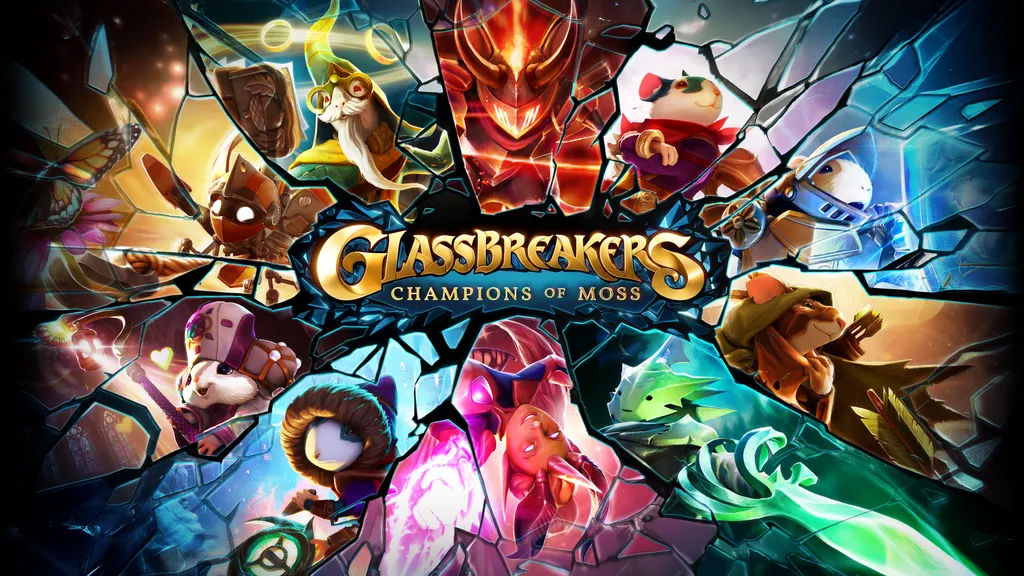Glassbreakers: Champions Of Moss is Polyarc's new free-to-play competitive multiplayer game, arriving in pre-release today on App Lab for Meta Quest headsets. We went hands-on with the real-time battler last week at Gamescom and came away thoroughly impressed.
When Polyarc first teased its in-development multiplayer game Glassbreakers in March, we didn't quite know what to expect. From what we could gather, it looked to be some kind of Smash Bros-esque competitive game set in the Moss universe.
Admittedly, I wasn't bullish on any such game featuring a roster of returning and new 'Moss universe' characters. However, after trying Glassbreakers last week, I'm happy to report that this free-to-play title offers something much more enticing.
I told as much to Polyarc Co-founder and Design Director Danny Bulla after we played a Glassbreakers match together last week at Gamescom. "We've been grinding," he responded, with a nod.
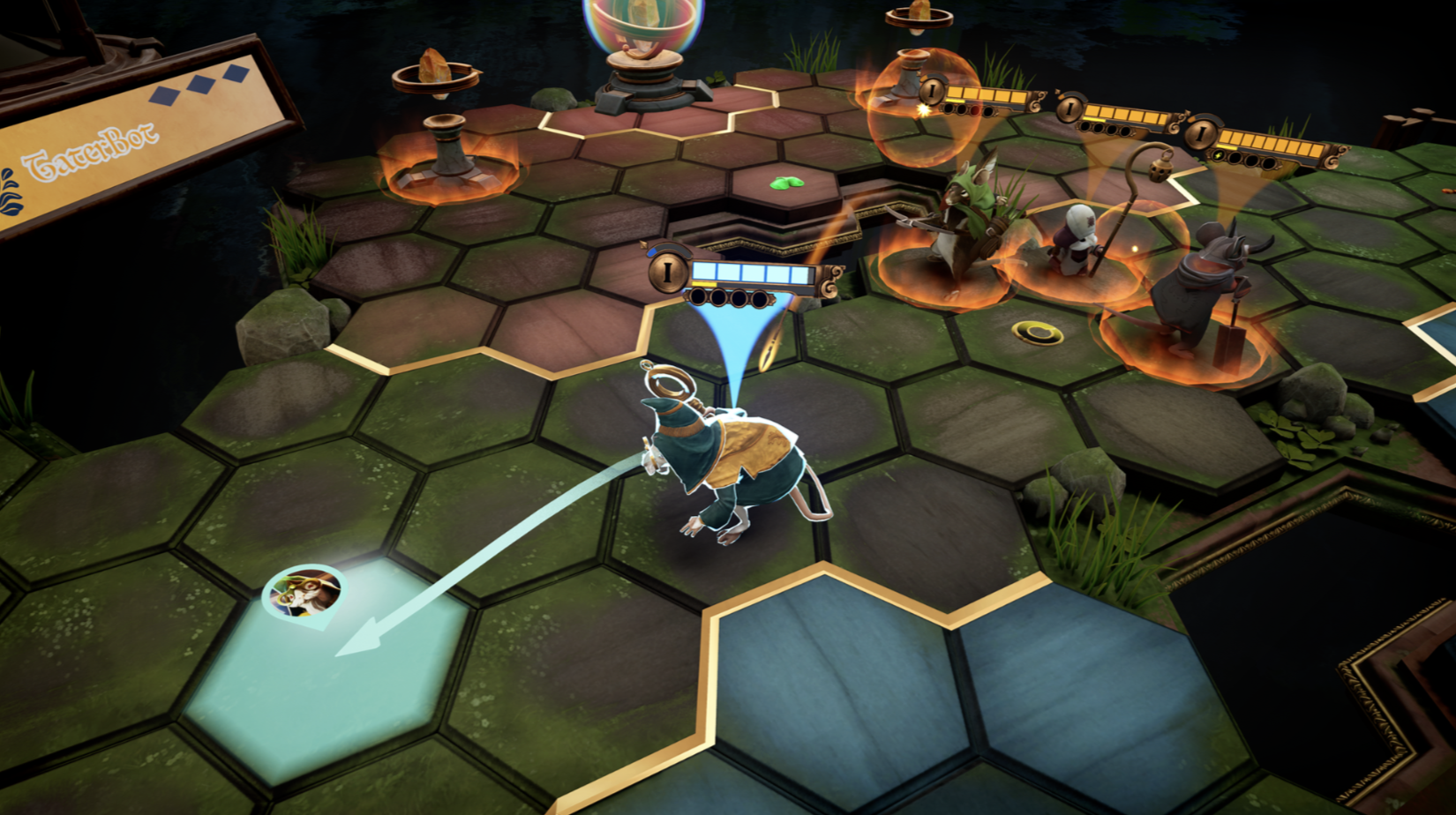
Polyarc publicly pulls back the curtains on Glassbreakers today, debuting a showcase segment that gives a first look at Champtions of Moss gameplay. While the initial concept art evoked a fighting game brawler, Glassbreakers is actually more like a hero-based, small-scale 1v1 MOBA reinvented for VR in the tabletop style of Demeo. And it all works really, really well.
First of all – don't be put off by the mention of the MOBA genre. There is some of that DNA here, for sure, but as a non-MOBA player myself, I found Glassbreakers took the best part of those mechanics and repacked them into something very accessible. It's easy to understand, designed for VR and seemingly deep in the potential levels of strategy, for those who want it.
It's made for short and sweet play sessions and, based off discussions with the development team, adopts a free-to-play that is seemingly incredible fair. Even more impressive, the game is an absolute sight to behold in headset. Performance was flawless and the visuals are stunning. The decision to make Glassbreakers a continuation of the Moss universe benefits less from narrative tie-in and more from the studio's ability to re-use and expand those games' top-tier environments, art direction and visual language.
So, let's dive into the nitty gritty.
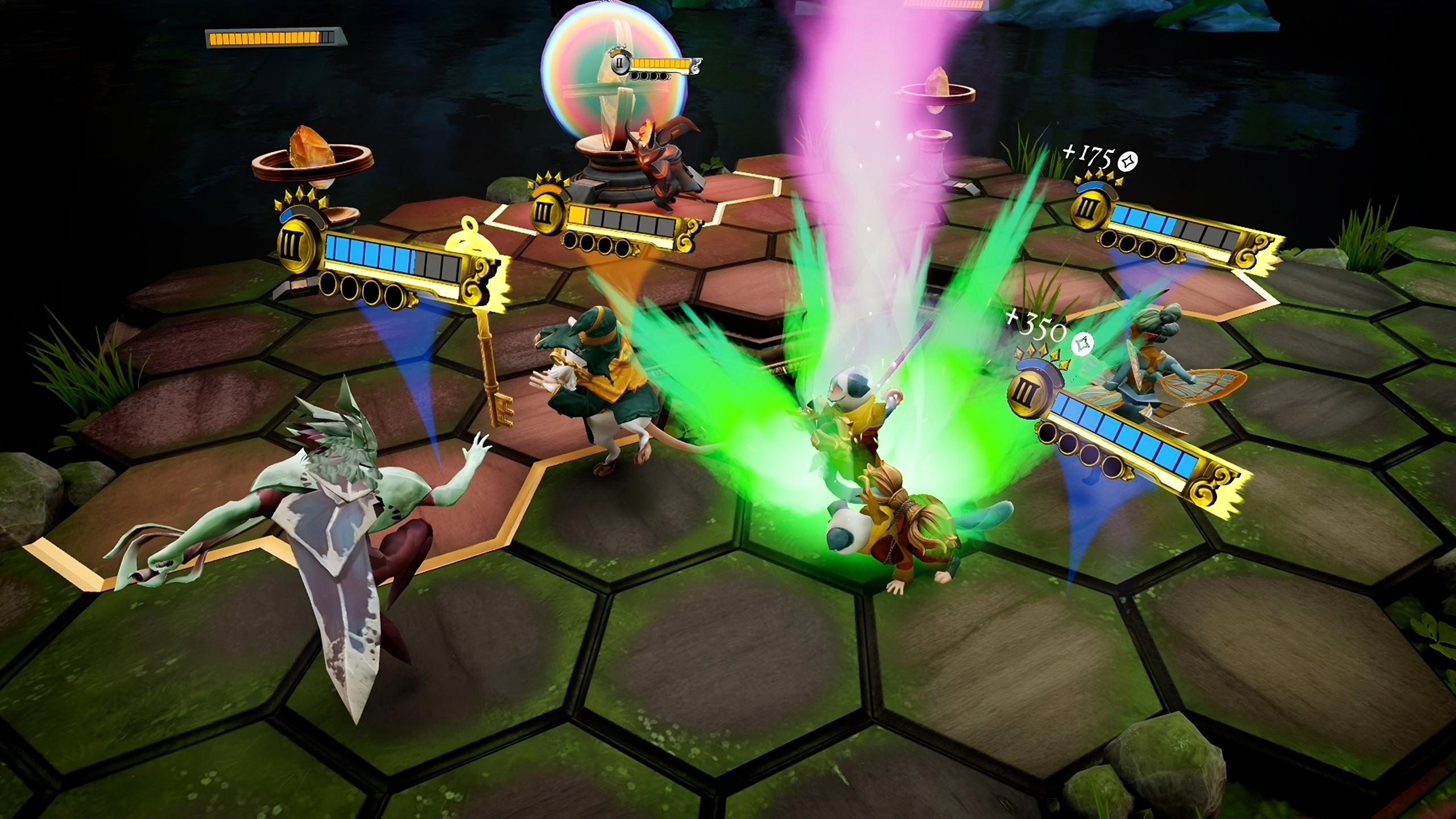
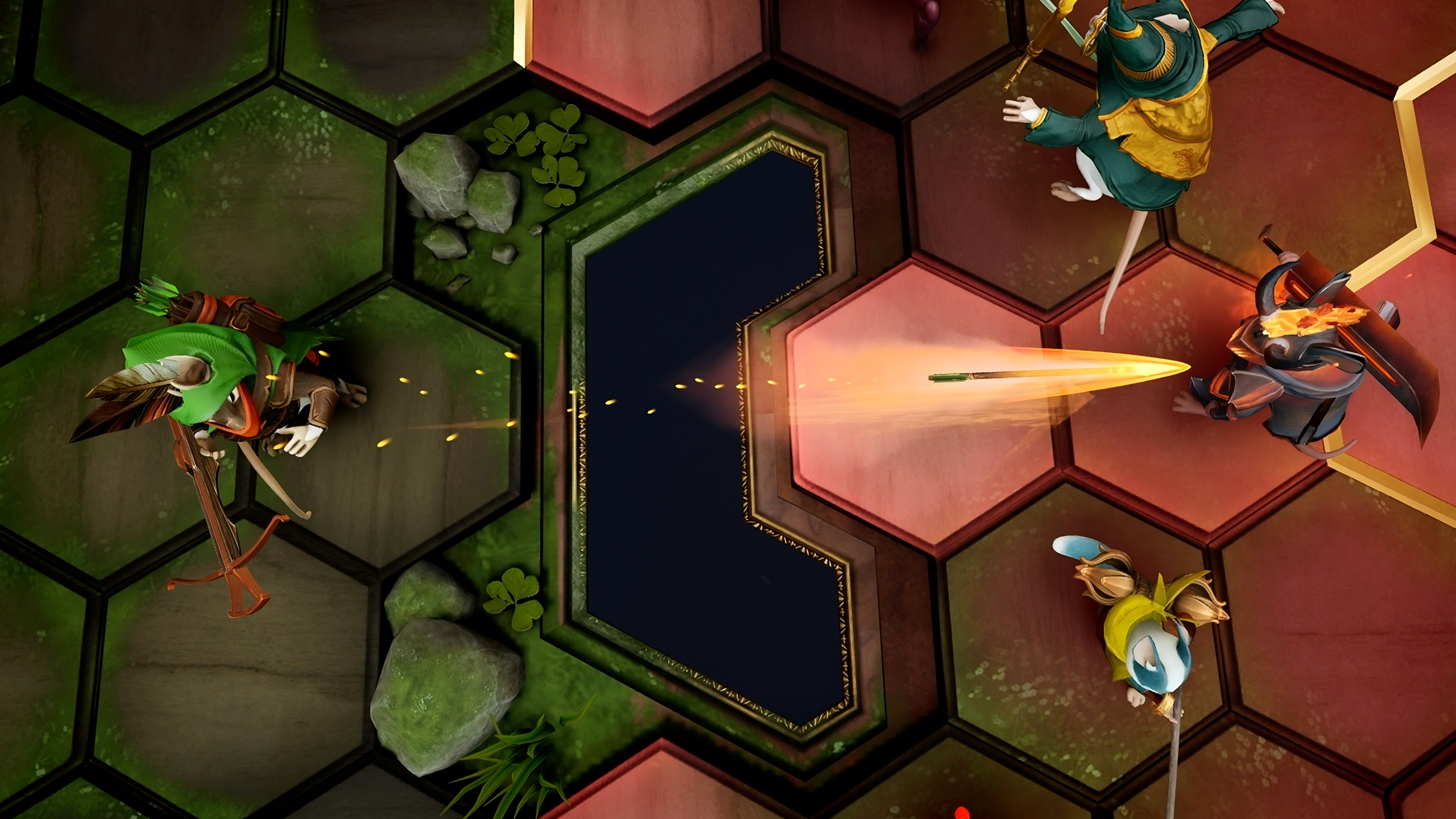
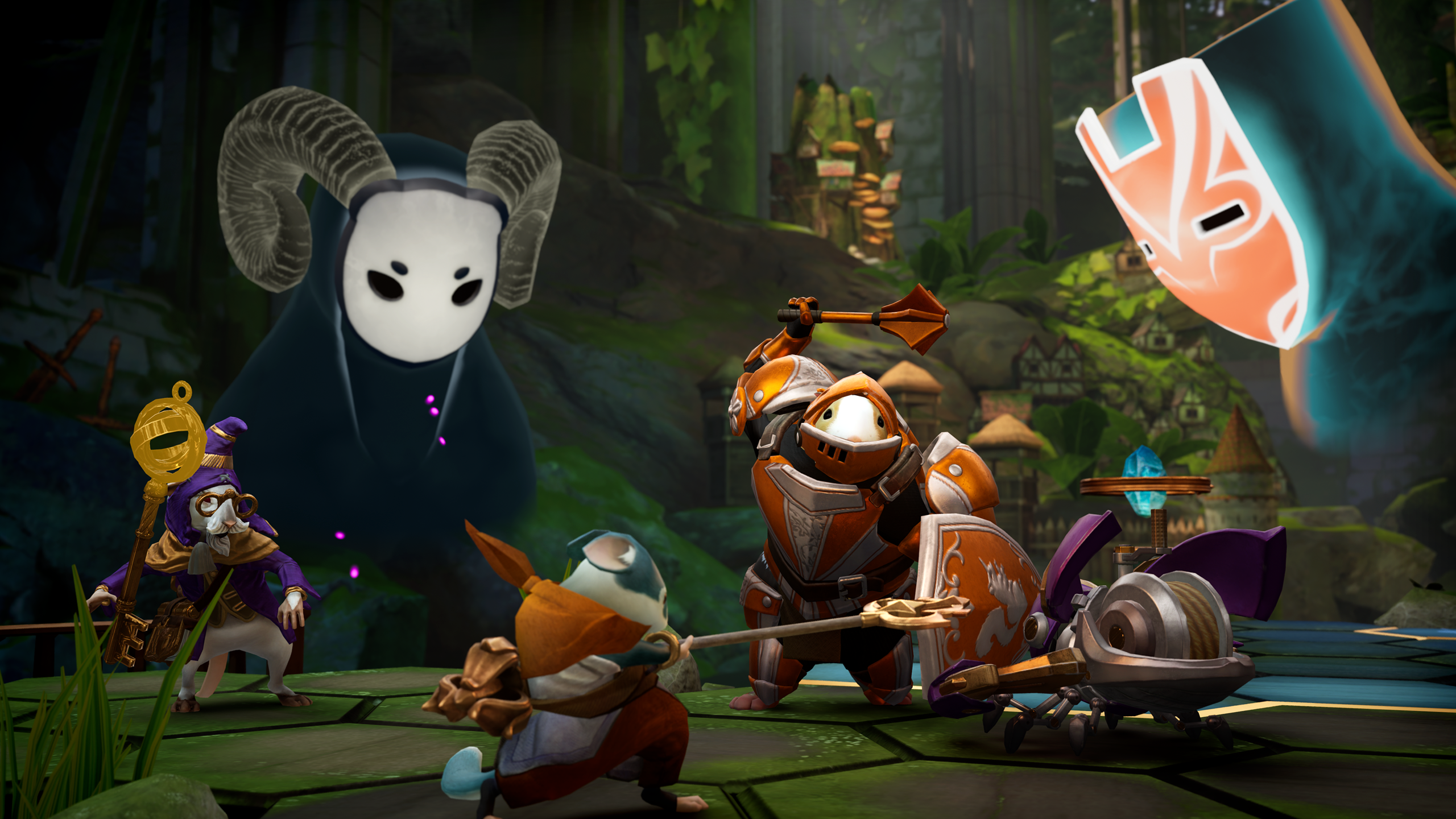
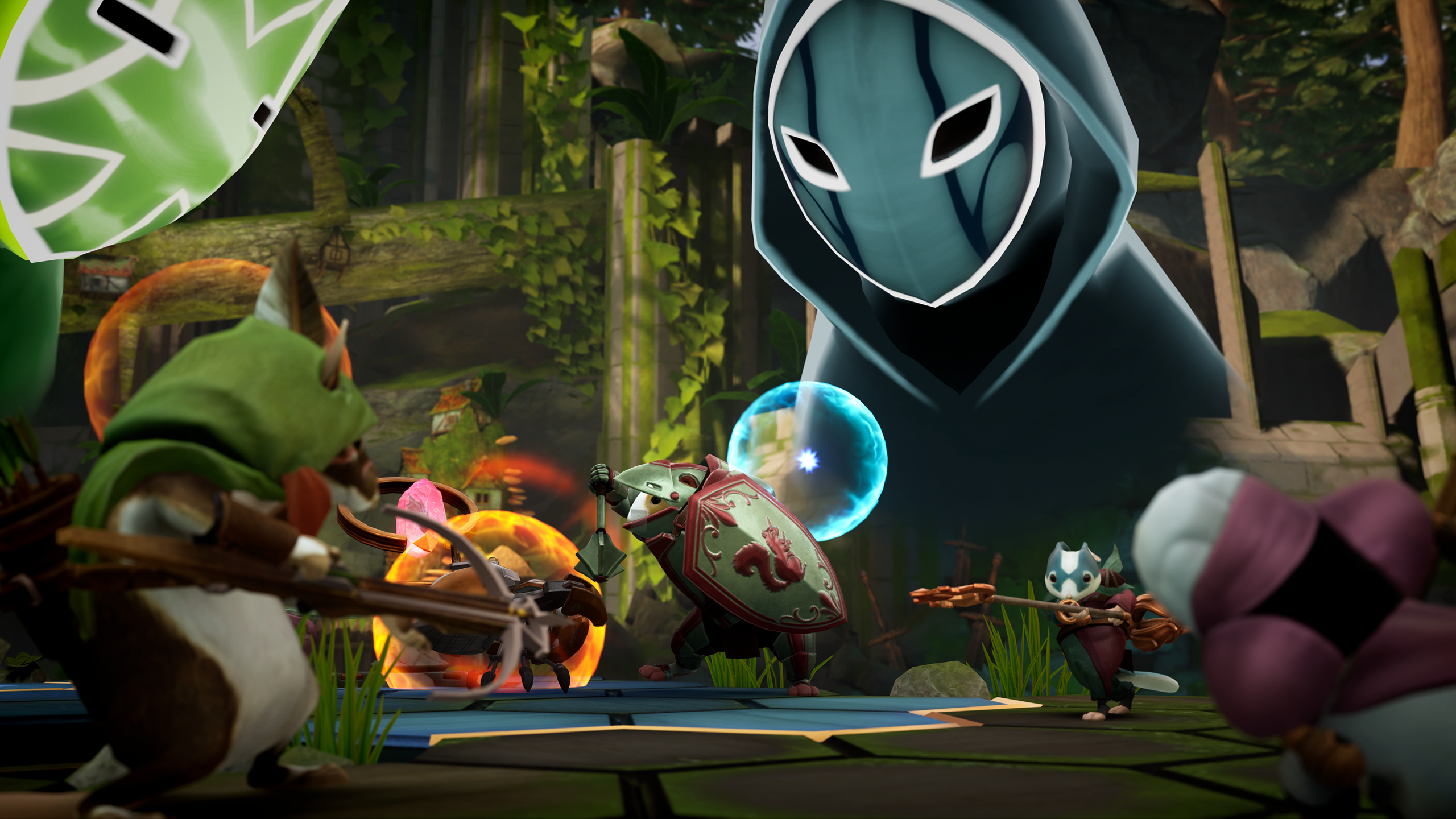
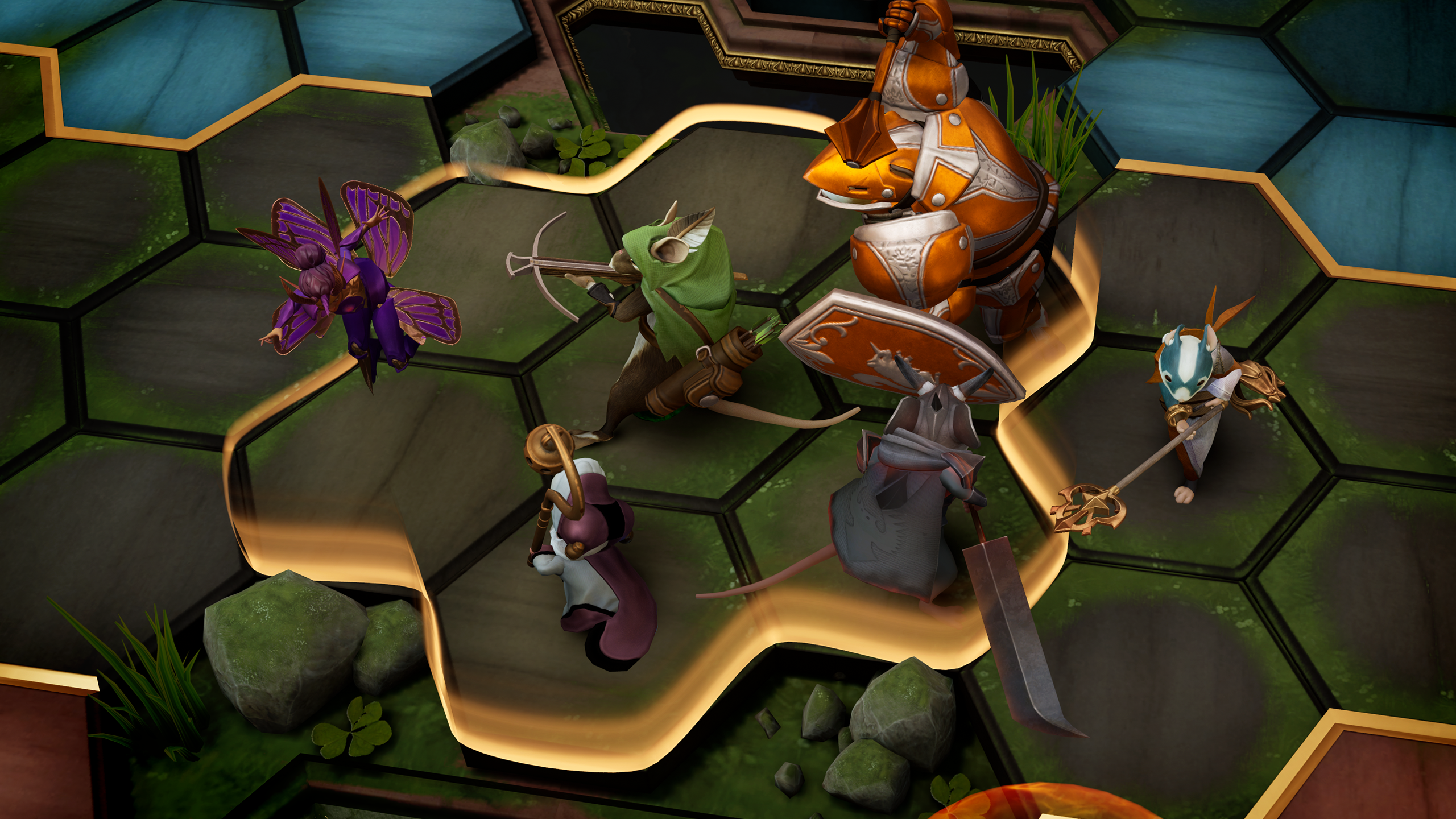
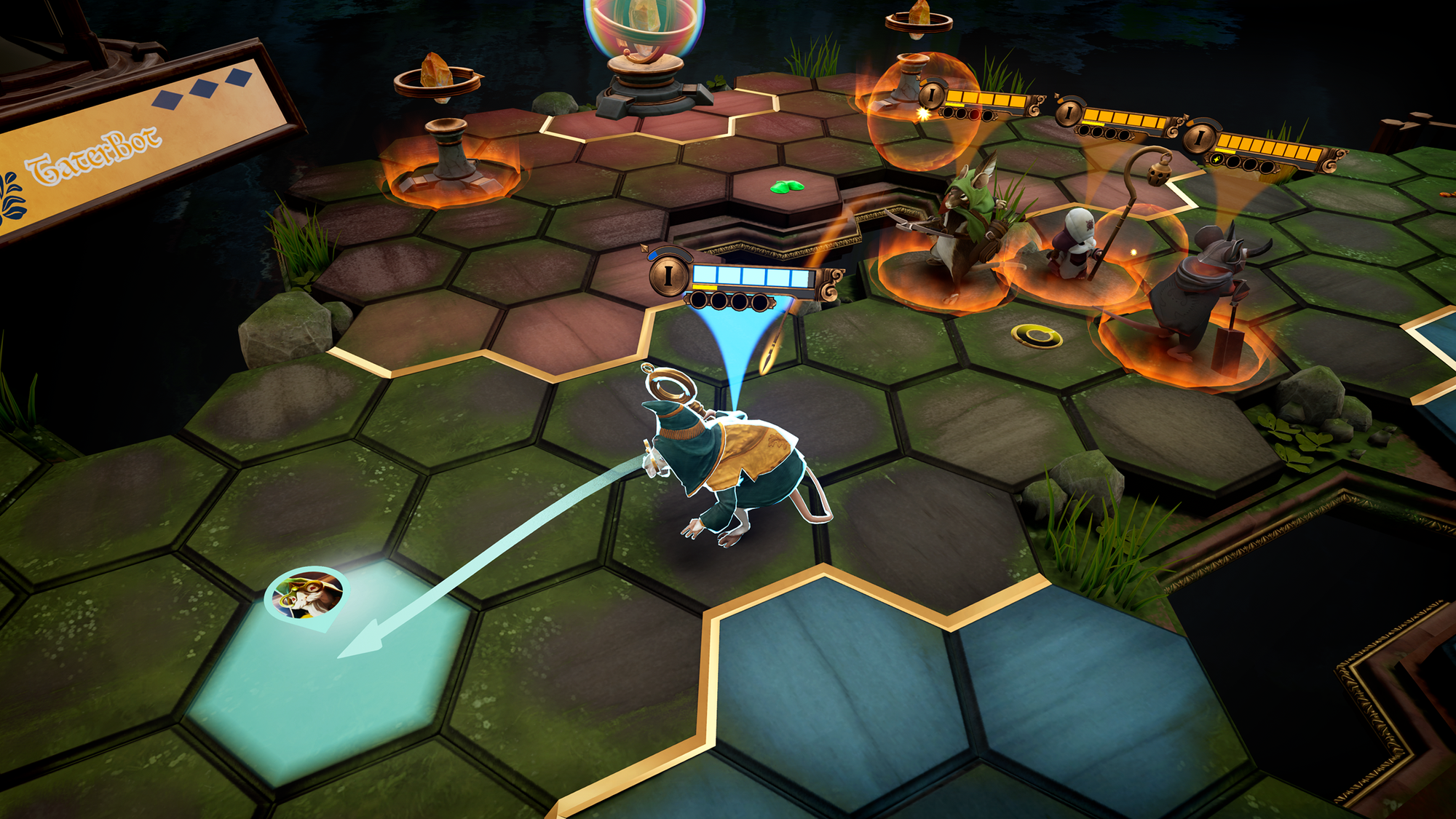
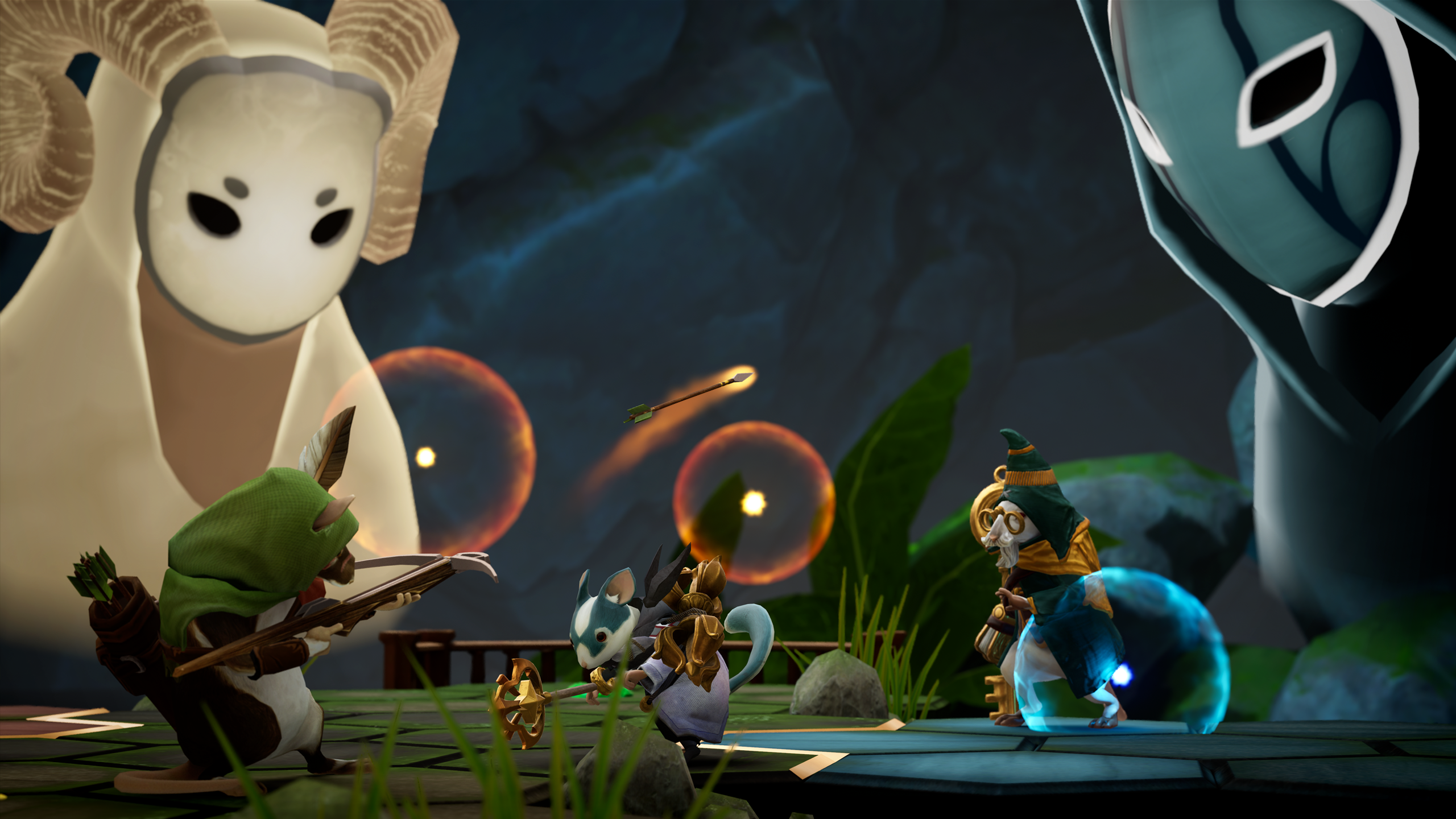
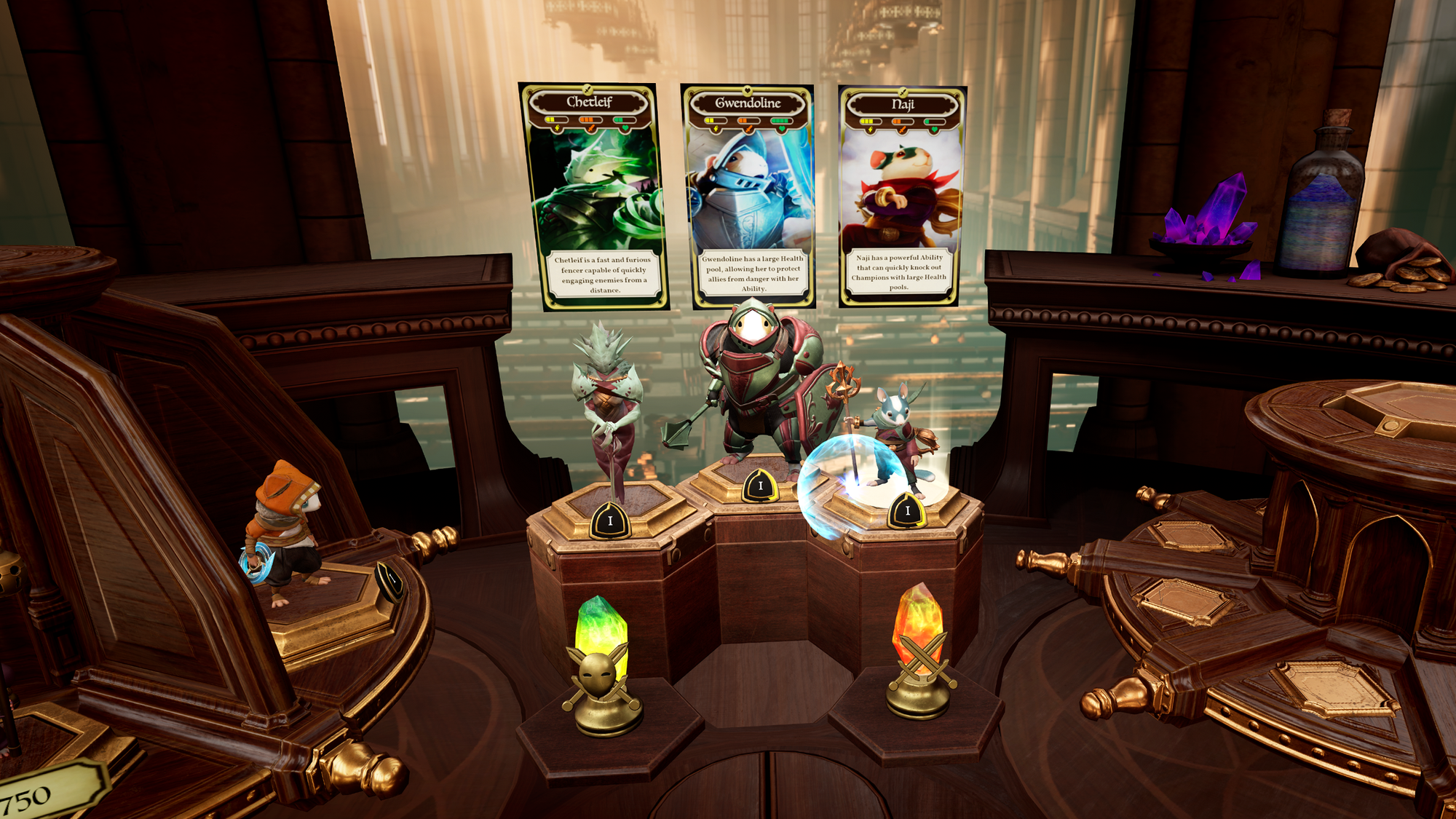
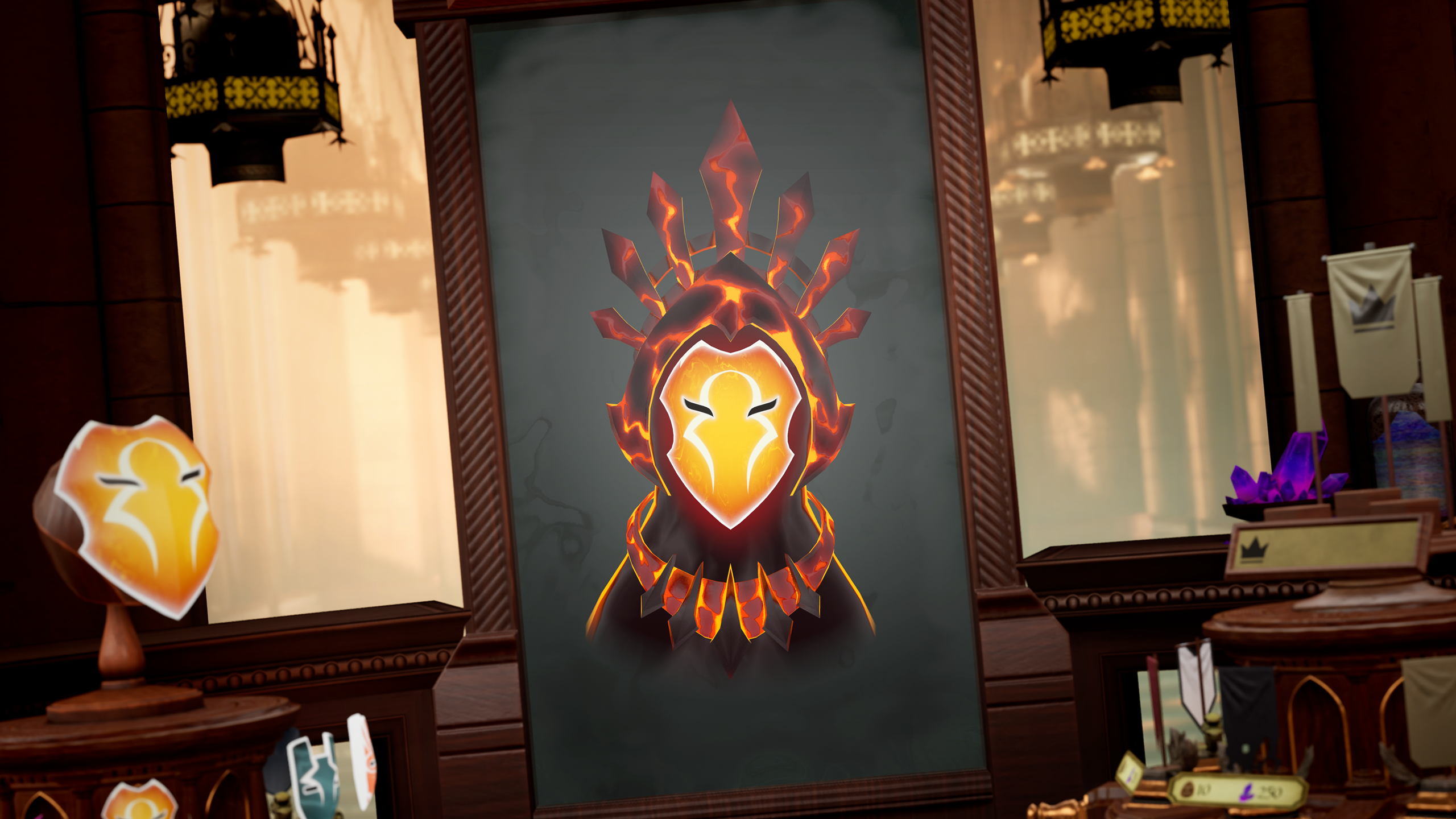
Real-Time 1v1 Hero Battler
Glassbreakers matches take place across a Demeo-like tabletop board, where players will compete in public or private 1v1, 8-minutes battles. Players will use their squad to vye for strategic position, advantages or win conditions that end the match before the time is up.
Each player controls a squad of three heroes (Champions) in real time, selected at the beginning of the match from a roster of existing and new characters in the Moss universe. The pre-release game available on App Lab from today features a roster of seven initial Champions, each with unique abilities that can affect the battle or turn the tide. More Champions will be introduced gradually as part of a live service, free-to-play model – but more on that later.
When I sat down last week with Polyarc Co-founder and Design Director Danny Bulla, he passionately explained the premise of Glassbreakers' MOBA-inspired tabletop battles with ease. The mechanics are a lot to take in at first, but nonetheless fairly simple to grasp at their core.
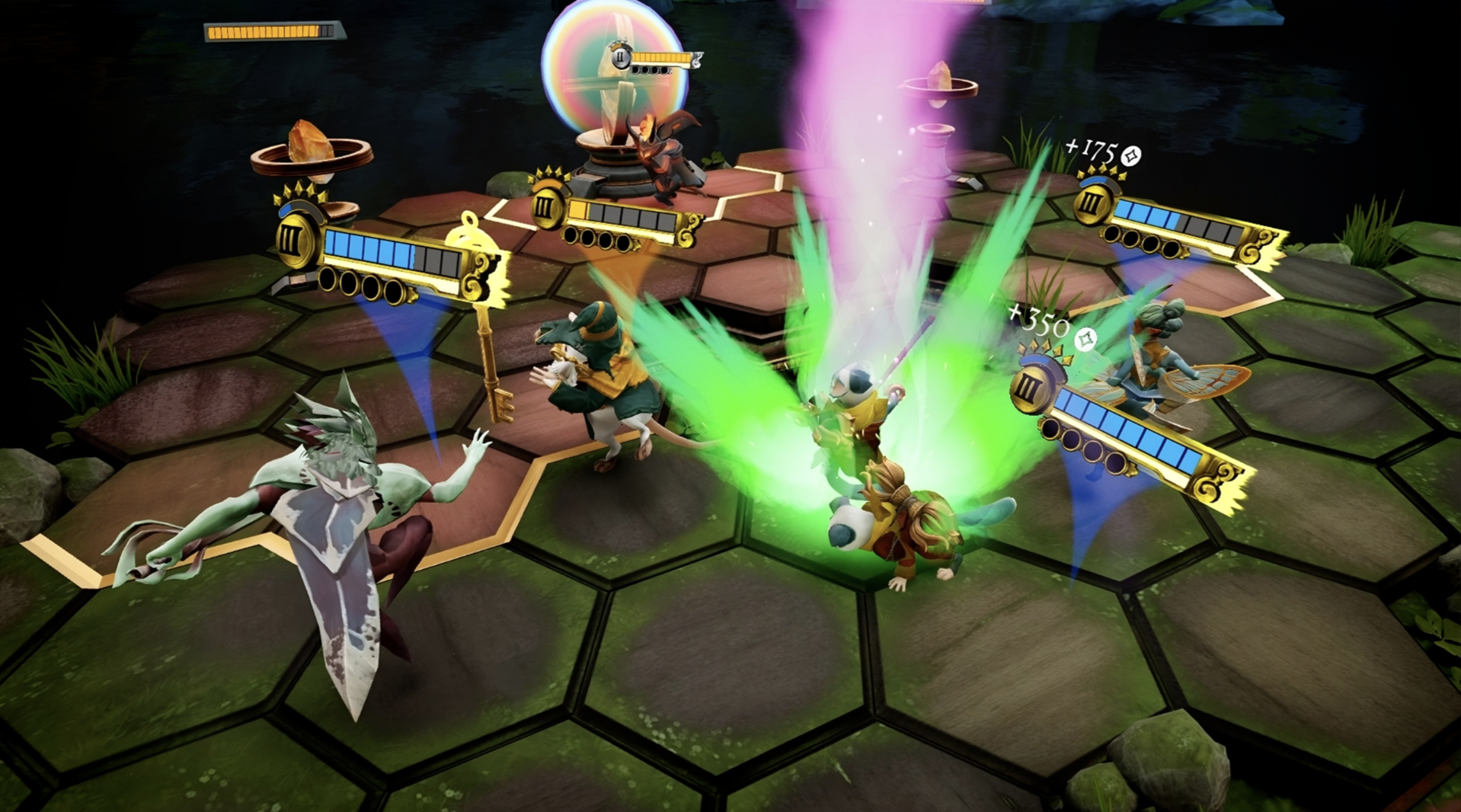
The elements that Glassbreakers adopt from the MOBA genre make for some fantastic real-time strategy moments with hopefully deep complexity as players improve. The playing field is not on the huge scale of a MOBA map with multiple lanes. Instead, it's a slightly-larger-than-Demeo tabletop battlefield, split into hexaonal tiles that Champions can be moved onto. You will need to pull yourself across the map with motion gestures, but it remains small enough in scale that the entire battlefield can be seen and assessed at all times.
The playing area contains several areas to compete for, which offer strategic advantages over you opponent. You'll need to position your Champtions carefully and choose where to attack or defend accordingly. The ultimate goal is to invade the opposing player's end of the board and attack their glass orb enough that it breaks – hence the game's title.
It's ultimately a fairly simple concept that requires smart positioning and understanding of each Champions's advantages, either by virtue of their class of their unique abilities. The short match length also feels like a perfect fit for those wanting quick VR sessions across a given week.
A VR-First Approach
However, Polyarc understands that Glassbreakers is a VR game and so its mechanics – and strategy – have been design to account for the advantages and constraints afforded by the immersive medium.
It's something Bulla stressed to me during our match together: the game isn't just designed for VR, but uses it as a core twist to provide more strategic depth. Unlike a flatscreen game, you have a direct view of your opponent and their movements in real time during a match. You can essentially try to read your opponents head and hand movements in VR to predict their next move ahead of time, or feint a move yourself in the hope of drawing out a key resource from the opponent's arsenal.
This VR-only level of strategy immediately sets Glassbreakers apart. As one of VR's veteran and prestigious studios, it should be no surprise that Polyarc took this approach. However, it also sifts down past the strategy and into the game's interactions and menus as well.
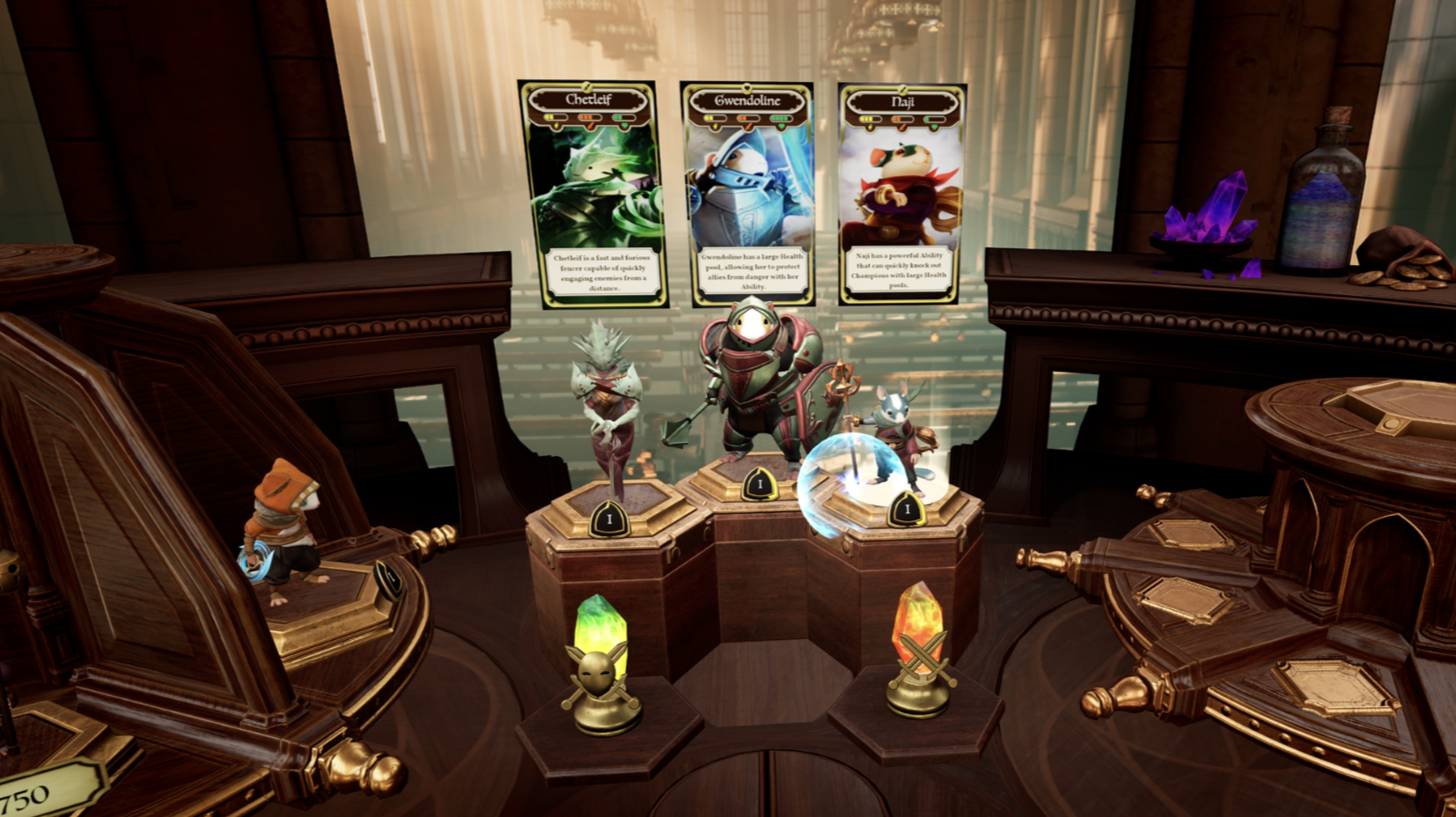
Easy-to-learn motion gestures convert otherwise tedious in-the-moment actions – like moving all Champions at once or retreating everyone back to heal – into intuitive, instantaneous commands. Likewise, the game's menus toss out flat screen panels and instead offer 3D systems that emphasize physical interaction and tangible objects to make selections or navigate options.
Instead of a battle pass or cosmetic options displayed on a flat screen, they're instead displayed as a series of 3D objects laid out on rotatable spindles in the main menu, pictured above. Hero selection is made by placing intricate figures on a podium, and every physical menu button looks intricately crafted and handmade for its purpose. There's barely a flatscreen, cursor-driven menu in sight – an impressive achievement given the tedious, menus-upon-menus approach assumed as standard in other live service systems.
Free-To-Play Model, Seasons & Release Strategy
Speaking off the free-to-play battle pass model, it's understandable that some players might feel hesitant about how Polyarc could monetize (and compromise) the game's strategic integrity with new Champion releases and paywalled content.
However, Bulla went to great lengths – and was happy to openly discuss – all the ways in which Polyarc want to ensure players this won't be the case.
With each season will arrive a new battle pass, which will include a new hero along with other cosmetics options for customizing heroes, in-game avatars and your player banners. It will be a familiar system for most – expect daily challenges and gradual progression across the season.
The most immediate concern to clear up is that while new heroes will be introduced as part of the seasonal battle pass, there will always be a path to unlock those heroes without offering up a cent of real-world money. Bulla stressed that Polyarc "are players too" and understand that locking strategic advantages behind a paywall would not be a popular choice.
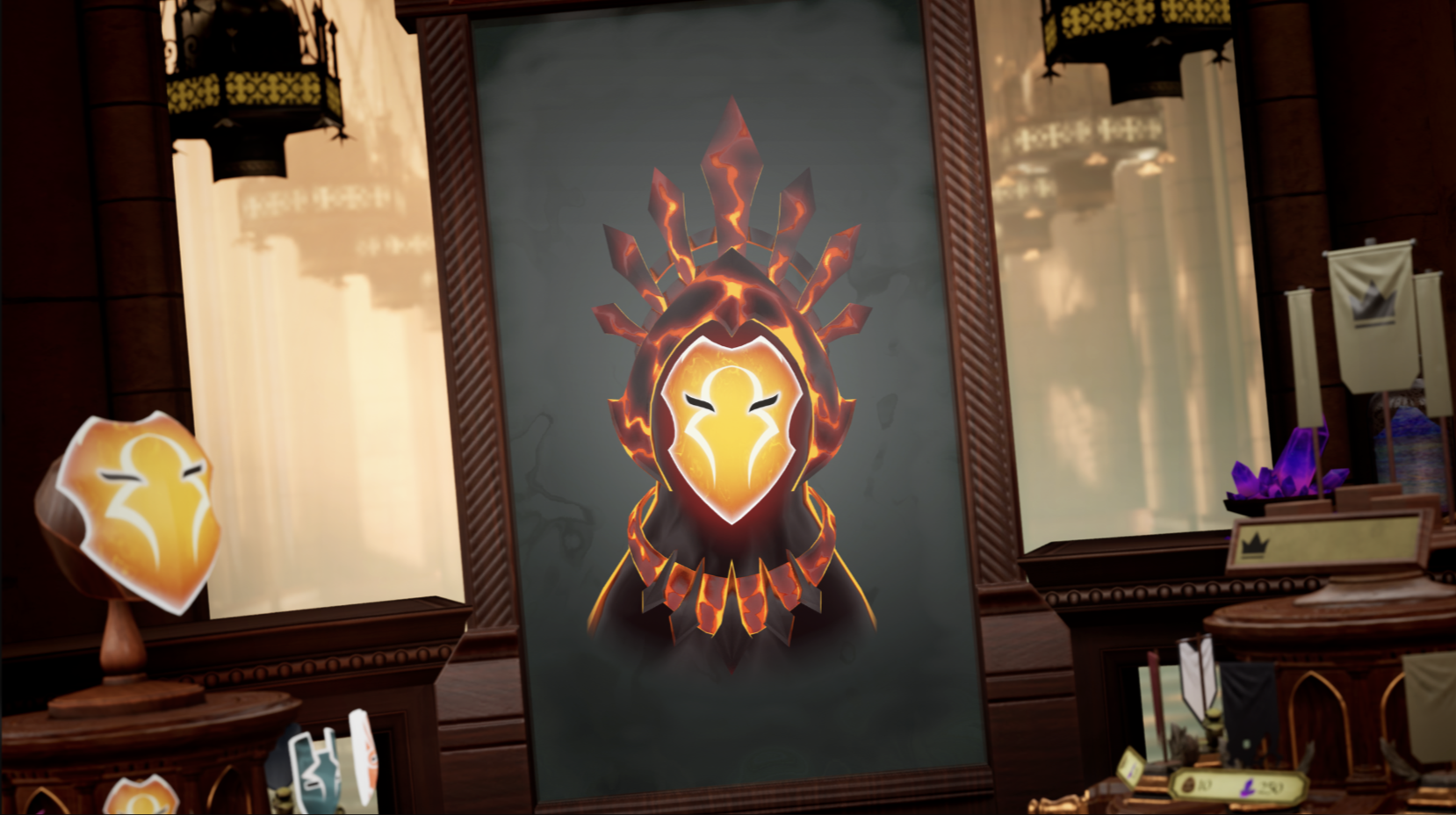
The game has three types of in-game currency, one of which will be purchasable with your real world cash as an in-app purchase. That can be then spent on the battle pass, which will have a free and paid track. Those that prefer to stay entirely free-to-play will still be able to unlock the paid track of the battle pass by using one of the other in-game currencies earned by playing.
The catch, of course, is that it could take you quite a bit longer to earn enough in-game currently to do so – and we can't be certain exactly how long that free-to-play grind might take just yet. The other in-game currencies can also be redeemed with a selection of standard cosmetics items available outside of the seasonal battle pass system as well. The cost of the battle pass (both in terms of in-game currency and its relative real-world cash cost) has yet to be decided, as has the exact length of each season.
On paper, my conversation with Bulla and my (limited) experience toying around with Glassbreakers' cosmetic and battle pass system leads me to believe that Polyarc is adoptiong a genuinely well-intentioned free-t0-play model. The ability to unlock content without paying real money is important and appreciated, as is the commitment to ensuring no strategic advantages or heroes get locked behind paywalls.
Bulla and I spoke about Marvel Snap, the new mobile card battler headed up by former Hearthstone Game Director Ben Brode at his new studio, Second Dinner. I noted that Snap is my personal touchstone for recent free-to-play models and Bulla mentioned that the game "took over" the Polyarc office at times during the last year – so no doubt the reception of Snap's economic model influenced Glassbreakers one way or another.
It's worth nothing that Marvel Snap is much more economically aggressive than it seems like Glassbreakers will be. There are hugely exorbitant (but entirely optional) cosmetic purchases in Snap, for example, and the system of card acquisition – especially with new cards featured in the monthly battle pass – is fairly grind-y by nature. Snap never truly throttles free-to-play players, but it does somewhat constrain them for a limited time, incentivizing battle pass purchases to unlock the shiny new card faster.
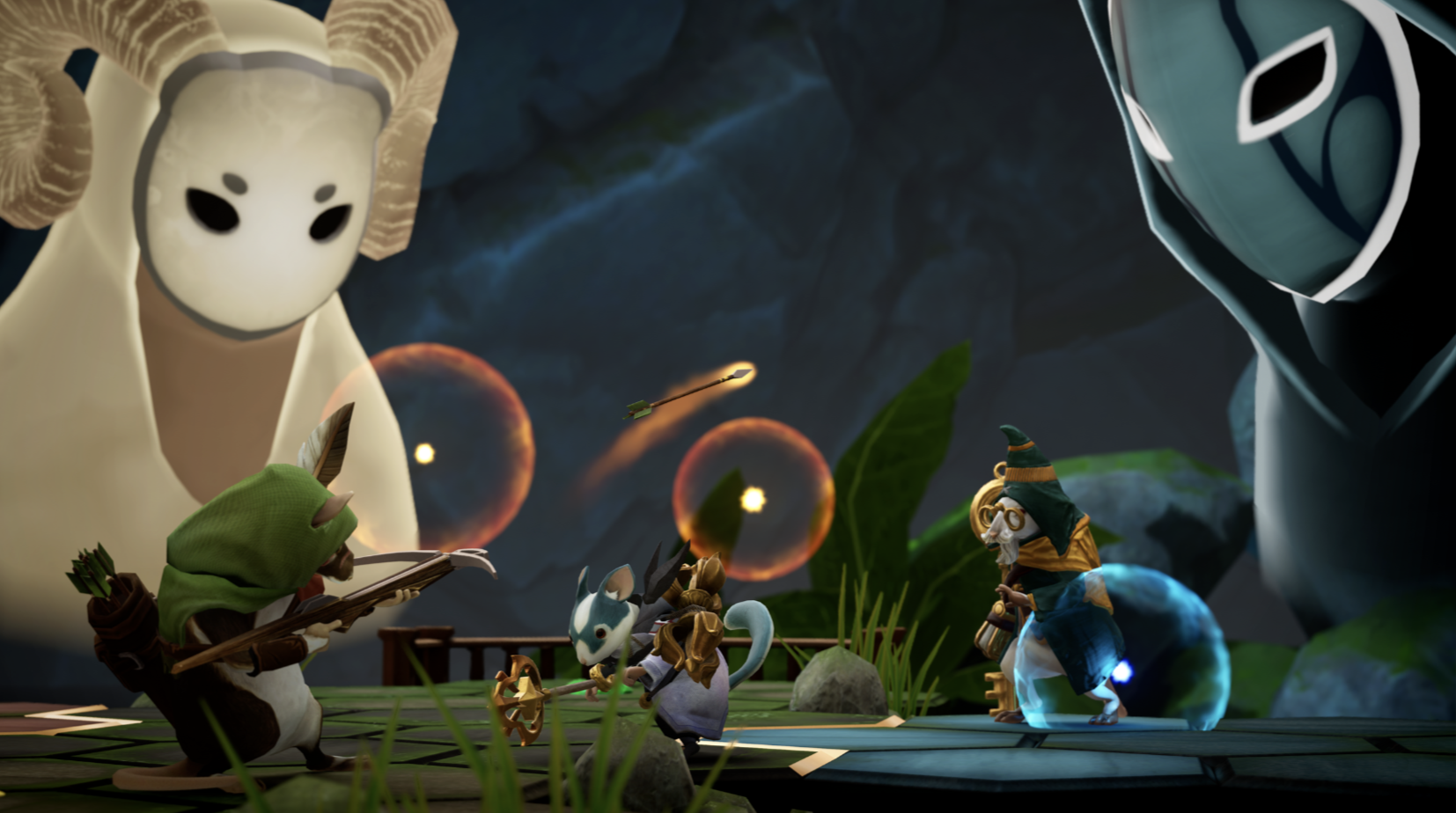
This is worth keeping in mind with regards to Glassbreakers and the remaining unknowns of its free-to-play model. We don't know how much longer it might take for a free-to-play player to unlock a new battle pass Champion compared to someone who pays, for example. Looking back at Marvel Snap, Second Dinner has a habit of making the monthly battle pass card a fairly attractive (and strategically powerful) proposition, enticing players to spend money. Polyarc may not be innately paywalling strategy by allowing players will eventually unlock new Champions for free, but it could effectively feel uncompetitive if that free-to-pay unlock path is lined with matches against paid battle pass players consistently sporting a powerful new Champion each season. The risk players take on with a free-to-play model is the goalposts are both unknown and moveable by developers at any point in time.
Good Intentions
That said, that doesn't seem the intention Polyarc's intention with Glassbreakers. My conversations with the developers inicate that the Polyarc team does want the very best for players, while still ensuring there remains a path for them to rightly profit off this game that they have spent years developing.
The free-to-play battle pass model is also justified by a desire to get as many players as possible into the game without any initial cost. While there's more VR players than ever, it's still a relatively small market compared to flatscreen games – multiplayer titles will live or die on a healthy player population, matchmaking and queue times. Polyarc's proposed system seems like a fair compromise to achieve longevity with Glassbreakers.
If you want to decide for yourself, then you can check out the pre-release launch of Glassbreakers: Champions of Moss on Quest headsets via App Lab from today. Those who play Glassbreakers between today and September 4 can participate in a 'Bonus XP Event' that awards tokens, used for buying skin dyes, unique player masks, banners, and crests.
This is just the beginning for the game – a Steam release for PC VR is coming "later this year" and Bulla told me that the studio is taking a similar approach to headset platforms as it did with Moss. Start with one first, then gradually launch on others. We're looking forward to seeing how it does.

